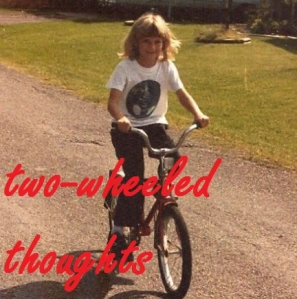My friend and editor at the Shelf, Dave Wheeler, recommended this book to me. “It did not get the attention it deserves, in my opinion,” he writes. “And it has one of my favorite voices for Satan that I have ever read–this earnest, wry epicurean seductiveness.” If that line didn’t catch my attention! I don’t actually have any other voices-of-Satan in literature that I can easily call to mind, but that is Dave for you: well-read.
 The quality he wanted to call my attention to in this novel is the way it shifts its scope back and forth from the miniscule to the cosmic. It has a most interesting structure, beginning with its epigraph from Percy Bysshe Shelley’s Adonais:
The quality he wanted to call my attention to in this novel is the way it shifts its scope back and forth from the miniscule to the cosmic. It has a most interesting structure, beginning with its epigraph from Percy Bysshe Shelley’s Adonais:
Go thou to Rome, –at once the Paradise,
The grave, the city, and the wilderness.
The novel is then set in Rome, in eight sections: the wilderness, the city, the grave, and the paradise (and repeat).
“The Wilderness” takes place in 2015 and centers on an American scientist on semester-long fellowship in the ancient city, to study the effects of chemical pollution on aquatic crustacean populations. He is passionate about his ostracods, but also glad to escape his marriage, if only for a few months – the only thing he misses in California is his daughter, who has just begun to lose her confidence as puberty looms. “His worst failing as a father would be if she meekened into him. A moth. A snail.” The scientist is also a bit of a poet, which is seen as a liability in the scientific field, “but Tom didn’t understand how you could avoid them: either the microscope or the poem.”
“The City” is set in 1559 and stars a Medici princess with a disturbing (to the men in her life) irreverence and independent streak. Giulia seems determined to pick fights and clear her own paths; I adore her, and miss her now. When angry Romans begin burning churches and Giulia smells the smoke “snaked in her hair,” she thinks: “Rome had never smelled so nice.”
“The Grave” takes place in 896-897 and introduces us to Felix, a monk assigned to the putridarium, and this delightful place (if it is new to you as it was to me) is where the monastery’s dead are seated upright to decay and self-destruct slowly under Felix’s watchful eye, until their dry skeleton is ready for the sarcophagus. “His tasks were to defend the bodies from desecration in case of heathen raid and to mark carefully the progress of the bodies’ purgatorial decay so he might converse with monks who had fears about mortality.” Felix was a joy for me, as well, with his quietly morbid interests, his sense of humor and play, his contemplations and anxieties. (Considering his fellow monks’ mismatched hairstyles, Felix comforts himself, “Once dead, they’d match up better.”) I never would have expected a monk to feel so like someone I’d like to befriend.
“The Paradise” is set in 165, and its protagonist is a girl of twelve named Prisca, and by the time we meet her for the first time on page 121, we have begun to recognize her name: Santa Prisca is the monastery where Felix lives in 896, where a minor cardinal serves whom Giulia offers to patronize in 1559, and where Tom will stumble through in 2015. Prisca’s faith has a grandiosity to it that might distance her from me, but she is oh so human, and also a very relatable tomboy frustrated by her own adolescence and the world’s blindness: “Don’t be worried; they won’t come for you,” she is reassured. “Then they’re fools,” she replies.
Prisca is the child martyr who in part ties these stories together – there are other threads connecting them, as well. Back to editor friend Dave: the pond in which Tom collects his ostracods “is the axis that the novel spins on, traversing time and space in extraordinary ways.” And there is an object (you know I love these), a fishhook that over these millennia will be handled by each of our four protagonists in turn. “That this was once treasured by somebody – by anybody – was enough to endear it to Felix.” And to me. A novel in four sections, then, in four times, in one place; four protagonists connected by a location and a thing. The zooming of scope from microscopic crustacean to profundities: the meaning of suffering, the tension and wrestling between God and Satan, love. This is a glorious, impressive book.
I loved the ways in which The Everlasting surprised me. Tom, being of my own time, was the character I most related to on first glance, but he was the one I least sympathized with in the end. Giulia was a brash, take-no-prisoners, badass feminist Medici, hiding and deciding how to handle a secret of her own. Felix and his brothers in the monastery are playful and silly. Prisca is both brave and delightfully snarky: a child in 165 is still just a child after all. Also that voice of Satan was just as Dave promised, and I don’t think I can put it any better than he did: earnest, wry, epicurean, seductive. Loving. Wronged.
The mind of Katy Simpson Smith amazes me; how does one conceive of such a story? I love it and its deceptively simple, all-encompassing structure. I am awed. Thanks for the recommendation, Dave!
Filed under: book reviews | Tagged: historical fiction, objects, sense of place |







So many scenarios to tie together, reminds me a bit of the Cloud Atlas in the complexity and time-jumping. I got lost in the depth of the review, but some words stood out: meeken, putridarium, ostracods. Three new words, I think that’s a record for one post!
How does a writer create such a thing? No one knows, but it is awe-full & admirable in its mystery. This is going in my BTR* file. *Books to Read.
I had actually interpreted ‘meeken’ as a coinage, but it looks like it was already recognized as a word. I do love learning new things. An impressive novel, for sure!